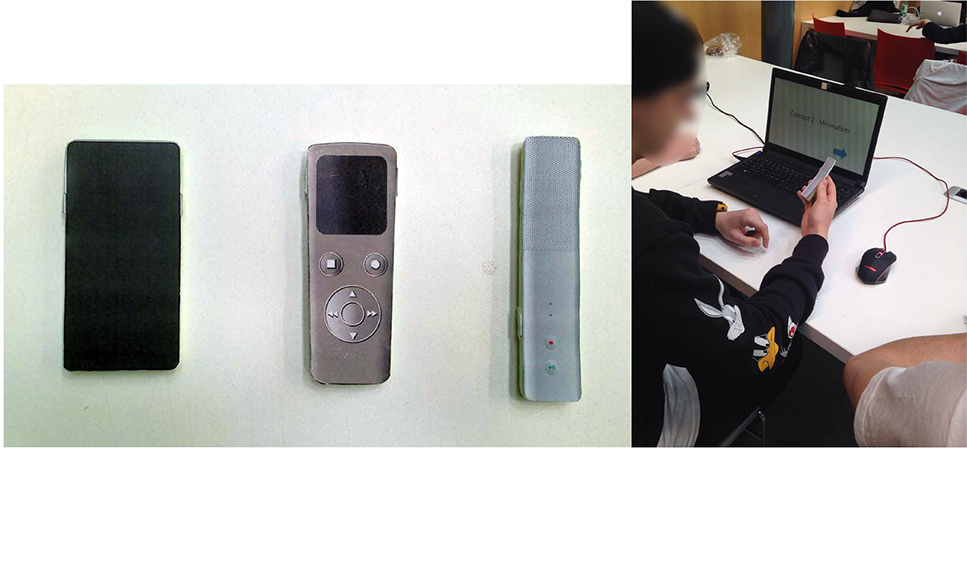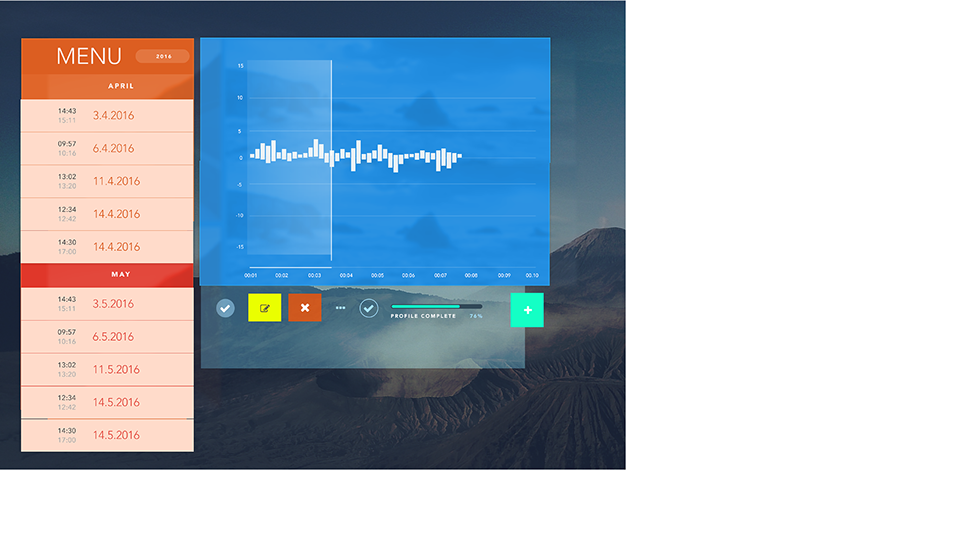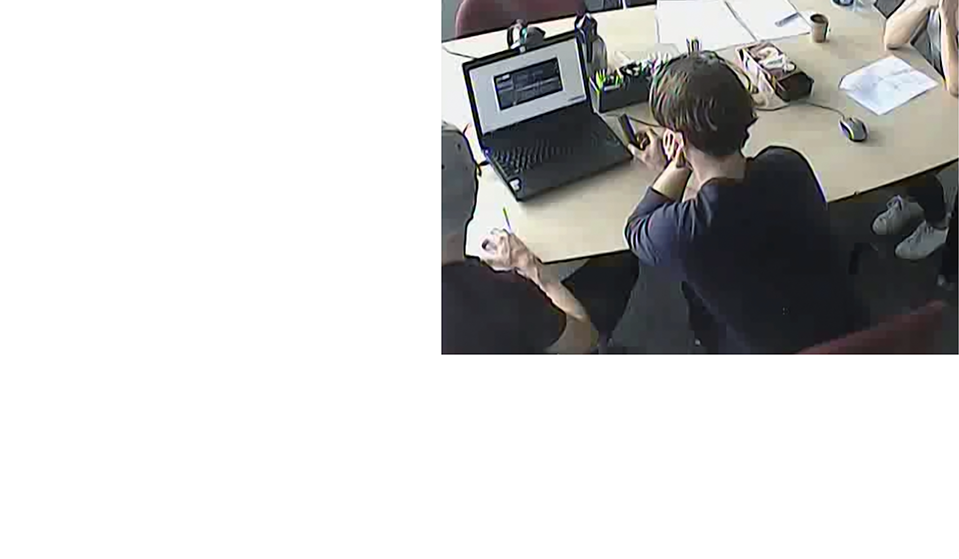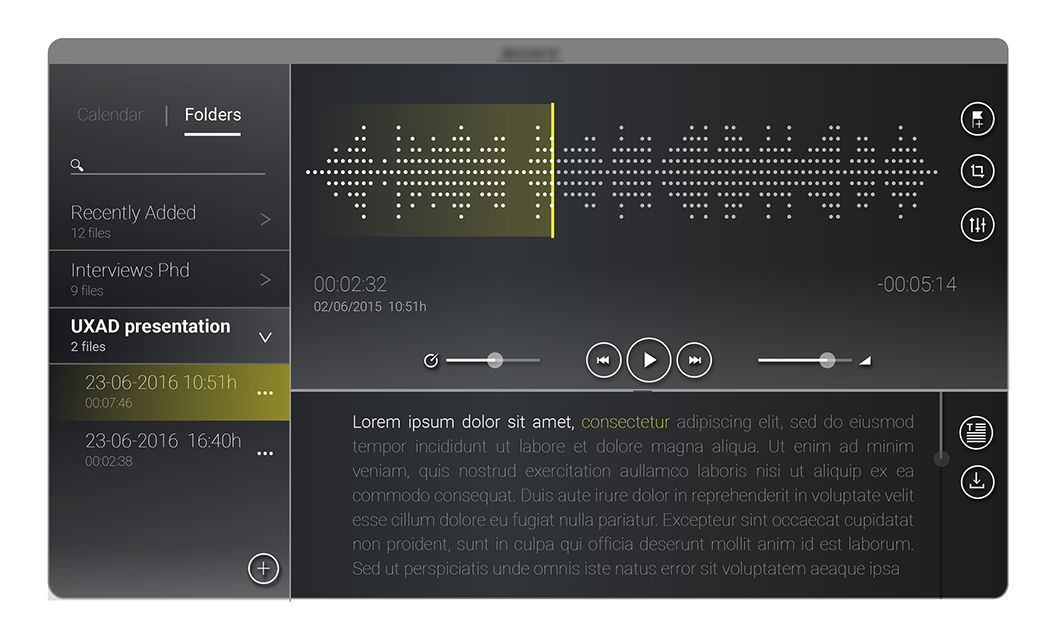
DICTAPHONE REDESIGN

USABILITY & EXPERIENCE TESTING
The image above showcases part of a redesign of the dictaphone shown on the right here. It can easily be seen that the device on the right looks old-fashioned and the cluttered interface and multitude of ambiguous buttons make up for a non-intuitive interaction and frustrating user experience. It is a very clear example that the way the human mechanism works (i.e. the way we behave, perceive, think, interpret and feel as a result of evolution) is oftentimes disregarded by designers.
During this team project I was highly involved with usability and experience testing and translating findings to a redesign. By continuously involving the user in our (re)design process I learned to take this human mechanism into account to come up with a solution that fits the user in a natural way.

CONCEPT DEVELOPMENT


FINAL REDESIGN
The device was tested by potential users in realistic user scenarios in order to identify points of improvement with regard to the interaction with, and experience of the product. These points of improvement, along with many others, served as input for a redesign.
Before coming to our final redesign we made three concepts that cover the whole spectrum of potential solutions: moving towards a touch-screen (left), staying close to the old model (middle), and a minimalistic approach (right).
By making foam models and a PowerPoint mock-up of the interaction we conducted a small user test to enable us to make a well-founded decision and gather input for improvement at the same time. The minimalistic redesign was unanimously chosen as the best, however, we also identified a desire for software containing extra functionalities such as editing and transcribing. Again, we made an initial design of the software interface, as shown on the left.



The minimalistic redesign as well as the software interface were improved according to the insights of our concept testing (see below). A final redesign was mocked up using foam models, Max and InVision. This redesign was in turn validated by conducting usability and experience testing similar to the test that was conducted with the original design.
According to our findings our redesign turned a promising product into an excellent product that is intuitive to use, aesthetically pleasing and all-in-all much more in agreement with the needs and wishes of the end user.